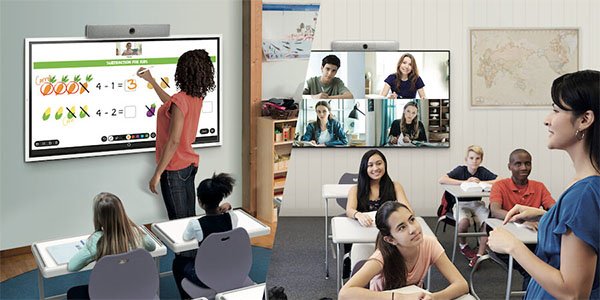Smart boards (also known as interactive whiteboards or electronic boards) can improve the learning experience while improving teachers’ lives. They allow teachers and students to collaborate, share files, access online resources and use educational software.

Here are five uses of smart boards in teaching and learning, and how they benefit each student.
1. Improve student participation
With the help of smart boards, teachers can attract attention to certain topics by writing or typing, highlighting, circles, arrows, or zooming in on the screen, and sharing multimedia content such as videos, web pages, presentations, and images, thus providing more dynamic courses.
2. New learning methods
Whether children are visual learners, auditory learners or kinesthetic learners, interactive whiteboards can benefit them. Visual learners benefit from high-definition resolution screens, while auditory learners can listen to multimedia content, and hands-on learners can use a stylus or even fingers to walk onto the board.
3. Save, share and send courses
Now, teachers can use the smart board to capture course screenshots, and immediately save and send them to the whole class and colleagues who may need them. If they miss something, they can easily review the course at their own time.
Smart board startup is easy at the beginning of the day, just open it.
4. Distance learning
Whether some or all classes are learning remotely, smart boards make it easier for teachers to include these students through video conferencing technology. No special camera is required. Students at home can see what teachers do and interact with their peers. This not only makes blended learning possible but also encourages blended learning.
5. Help students succeed
The students who study on the interactive whiteboard perform better on the standardized test than those who do not use the technology.
The same study pointed out that “visual materials, paintings, symbols, and screen design promote learning and increase the durability of learning.
continue reading




